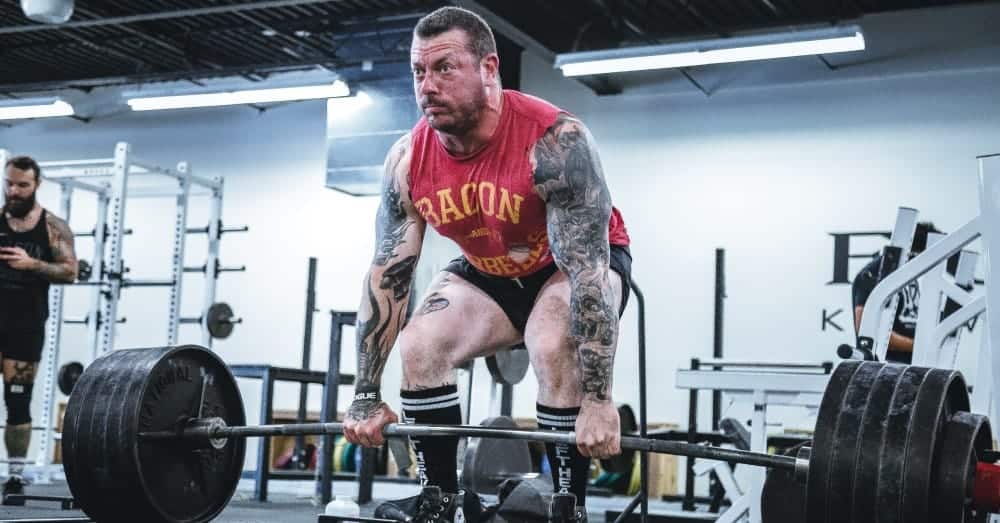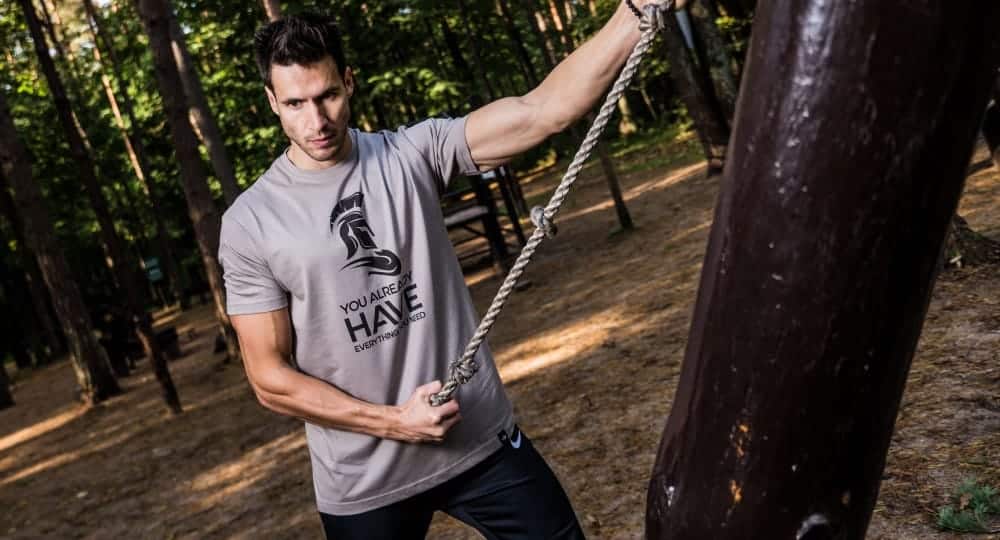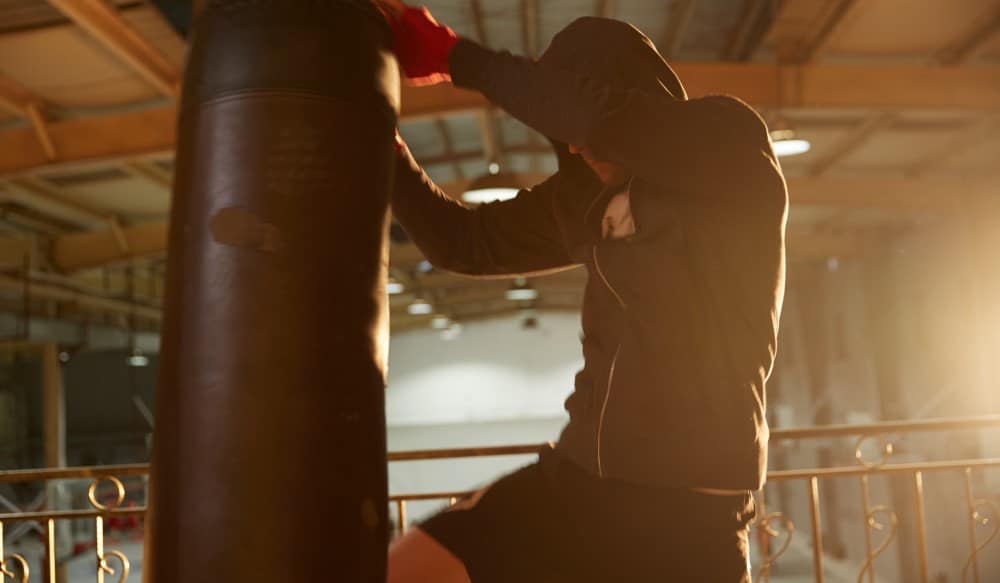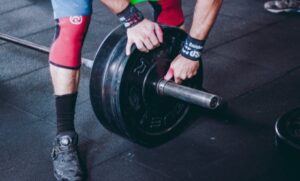
In today’s article I am going to cover the Workload in Weight Training.
What actually is “Workload” in Weight Training? And How does it particularly work? This and many more will be addressed in the following.
Basically, the workload describes the effort of one working set and thus classifies the performance achieved in a set, in terms of overall performance.
Thus, a utilization of 50% means that twice as many repetitions would have been possible.
By the same principle, 100% workload means that the effort could not have been higher and
In comparison to the intensity, the workload describes the effort of one set a lot better.
Why is Workload at all important?
To answer this we simply have to look at the consequences of too low / high workload:
1.) Too low workload:
Intuitively, we can directly say that a set that ends 15 repetitions before muscle failure is unlikely to have much effect on muscle and strength building.
Because the resulting training stress is probably just too low to be able to force significant adjustments.
Why should the body invest valuable energy to create muscles that consume energy when there is no reason to do so?
The body always strives for maximum efficiency to ensure its survival, so it only builds muscle when it really needs to.
2.) Too high workload:
By now, you certainly know that volume is probably the most important factor for building muscle. But what happens if you execute every single sentence with a load of 100%, that is, if you go to muscle failure?
You would sabotage your volume as your performance drops from sentence to sentence. Here’s an example with and without muscle failure in each sentence:
With muscle failure: 100kg 10x8x6x4 = 2800kg (volume)
Without muscle failure: 100kg 8x8x8x8 = 3200kg (volume)
As you can see, too high utilization can be counterproductive.
In summary, one can say that most of the time we should not train with too low or too high a load. However, there are exceptions (as in real life) that confirm the rule. Injuries, Deloads or the last few sets of a muscle group in a training session, just to name a few.
You can also use the workload to write
or run custom training plans. These plans then describe exactly when and how
closely you should approach your own performance to achieve optimal results.
After we have clarified how we can express the workload as accurately and practicably as possible, I will give you some rules so that you can train with the correct workload at all times.
Because let’s be honest, no one can guess if a set of 10 reps has now been executed at 77% or 79% of maximum performance. That’s why you usually do not express the load in

1.) RPE method
The RPE (rating of perceived exertion) or Borg scale is a scale from which one can measure the subjective perception of stress. The original scale had 15 levels, ranging from 6-20. However, we use a modified 10-point Borg scale, as it makes the most sense for strength athletes.
The modified RPE scale uses numbers 1-10 to show how close you were to muscle failure in one set, quantifying your personal workload.
Here, the number 10 means that you can not complete another repetition or (with the same repetition number) could handle no additional weight.
The number 9 implies that one repetition would have been possible and the number 8 would have allowed you to do two more reps. Following the same pattern, it is then easy to continue down to number 1.
Intermediate levels like 9.5 express that a bit more weight, but probably no further
So if you can push 101kg x 5 with an RPE of 10, 100kg x 5 would be an RPE of 9.5. Because you probably would not have made the 100kg x 6 but still a bit more weight (1kg).
RPE stress sensation
- 10 = muscle failure
- 9.5 = Maybe one more repetition
- 9 = Certainly one more repetition
- 8.5 = Maybe two more reps
- 8 = Two more repetitions
- 7.5 = Maybe three more reps
- 7 = Three reps more
- 6.5 = Maybe four more reps
- 6 = Four reps more
- 5.5 = Maybe 5 more reps
- 5 = Five reps more
And so forth..
In this case, the word “maybe” also implies a minimal increase in weight, since an additional repetition is always heavier than an increase of 1kg.

2.) RIR method
Another and, in my opinion, better method for expressing the workload in weight training is the so-called Reps-In-Reserve-Method (RIR).
As the name implies, this is about the repetitions that would be possible after completing a set.
RIR stress sensation
- 0 = Muscle failure
- 0.5 = Maybe a repeat more
- 1 = One more repetition
- 1.5 = Maybe two more reps
- 2 = Two more repetitions
- 2.5 = Maybe three more reps
- 3 = Three repetitions
- 3.5 = Maybe four more reps
- 4 = Four more reps
- 4.5 = Maybe five more reps
- 5 = Five reps more
In principle, an “upside-down” RPE table but much more intuitive and practical, as well as this method allows situations such as “11 repetitions in the reserve”. In comparison, with the modified RPE method you would have a -1 and that would be anything but intuitive.
To truly assess RPEs or RIRs correctly, you need training experience and that’s why I would advise most beginners not to use training plans that use these schemes.
If you still want to train according to this principle or as an advanced athlete want to enjoy the benefits of autoregulation, you should of course know how RPEs or RIRs are to be evaluated correctly.
RPE / RIR Assessment
The most important requirement for a correct RPE or RIR measurement is a clean technique that does not change dramatically during the exercise.
Remember, you want to express the effort of the previous set in terms of your own potential. Of course, as you change the technique, your potential shifts as well, since it is strongly linked to a specific movement.
To illustrate this, let’s just assume that you can curl 50kg ten times with maximum effort. How many repetitions could you do now if you were cheating a lot? Probably more than 10, probably even 15.
If you start cheating on the tenth rep (RPE 10 / RIR 0) right now, then of course you are rating the workload incorrectly. Because if you remember, your maximum potential in this specific exercise was 10 reps. The only reason you can do more now is due to a change in your execution, and thus to reduce the burden per executed repetition.
As you can see, the technique has to be kept fairly constant if you want to specify RPEs or RIRs of a set. Of course, some fluctuations are completely normal and can be extremely difficult to avoid at high loads.
Nevertheless, you should strive for a clean technique, so you do not accidently train with RPE 35, instead of the planned RPE of 9.
In addition, the various muscles involved in performing multi-joint exercises may produce different RPEs / RIRs.
Here, too, an example helps us to deepen our understanding:
Suppose you could just squat 100kg ten times with maximum effort. Furthermore, let’s just assume that the first 5 reps are done with a very upright upper body position, after that, your upper body keeps falling forward from repetition to repetition.
On the muscular level, this means that your thigh muscle is eventually too tired to be able to move the load independently. In that case, more help is needed from the back of the body (back, hamstrings, and glutes) to do the exercise.
Where is the problem?
While the thigh muscle has reached RPE 10 / RIR 0 from the fifth repetition, this is not true for the muscles of the back body chain. Theoretically, these have not even reached an RPE 5 / RIR 5, as they could have done 5 more repetitions, although the movement gets tougher with each additional rep.
How can you correctly evaluate the RPE / RIR in this case?
In that
Generally, the goal in squats should be to properly stimulate the thigh muscle, as there are simply better alternatives to the muscles of the back chain. Accordingly, the RPE / RIR score should of course be related to the thigh muscle.
In addition, it is quite possible that you break in technically and dodge into the position in which you are the strongest. So always pay attention to a clean technique, even if you train with high workloads.
With this background knowledge, RPE or RIR recommendations can be made for most of the training time: 10> RPE> or 0 <RIR <5
To put it in words this means: You should usually be able to do one to four repetitions independently.
1.) RPE 10 or RIR 0 (muscle failure)
Can be used in the last few sets of a muscle group and rather at the end of a training cycle. So whenever you do not sabotage your total volume or where you can completely recover the training stress from unit to unit.
So if you only train each muscle once a week, you can easily go to muscle failure in the last few sets of a muscle group.
2.) RPE <6 or RIR> 4
Can be used in the Deload, in regeneration phases or in a speed strength training.
Finally, you must be aware that high workloads in combination with high intensities attack your regeneration much more than with low intensities.
Accordingly, the stress of RPE 9 / RIR 1 is much stronger at 90% than at 75%.
Take home
Let’s take a moment and recap what you have learned about Workload in Weight Training today.
– The workload describes the effort of a single set
– As a rule: 10> RPE> 5 or 0> RIR> 5
– Typical exceptions: Deload, end of cycle, low training frequency, speed training
– RPE / RIR rating not so easy and therefore only conditionally recommended for beginners
How does your workload look like? Did you already know about RPE/RIR methods before? Which method
Drop a comment below!
Thanks for reading, highly appreciated,
Claas




